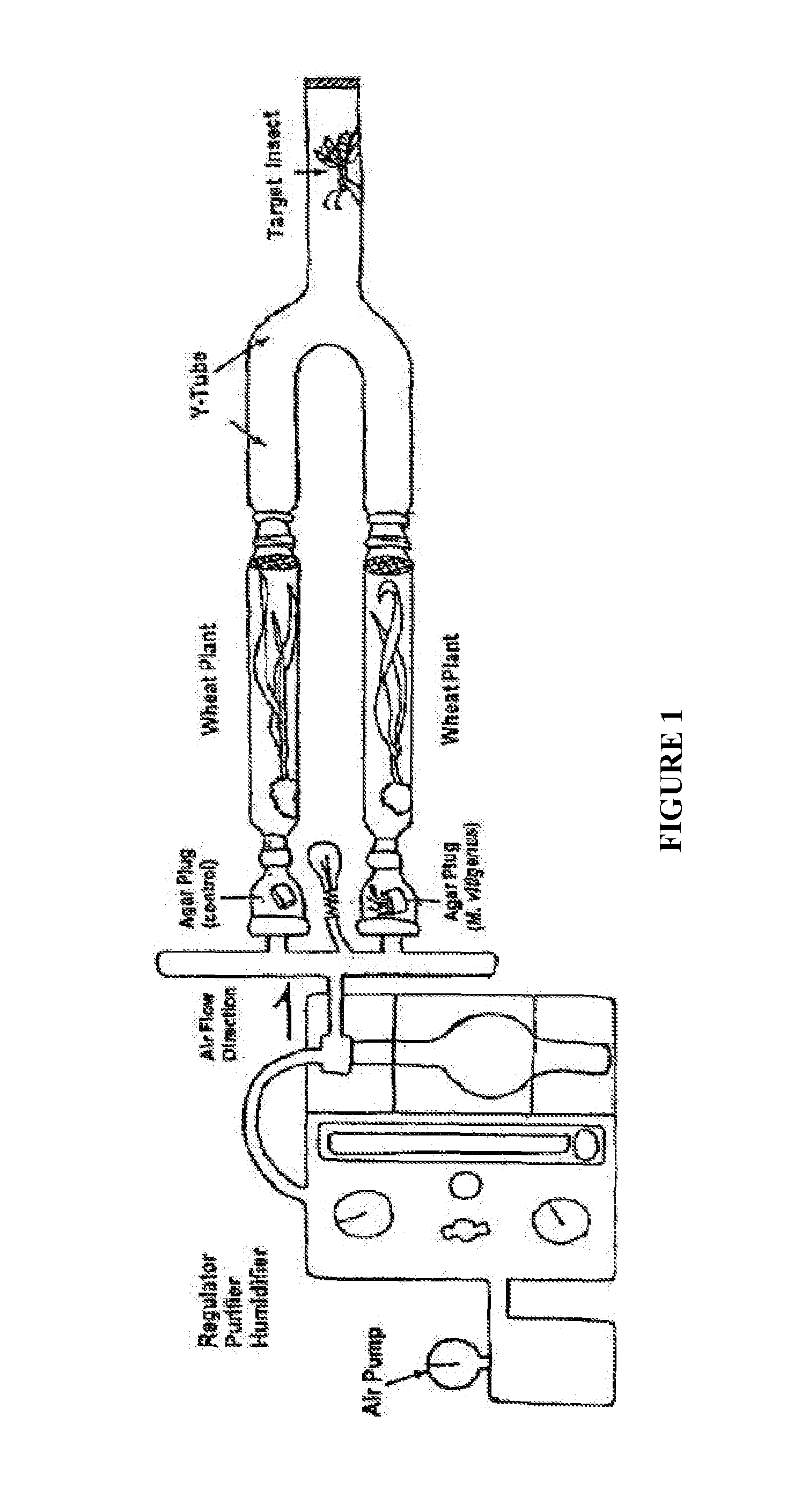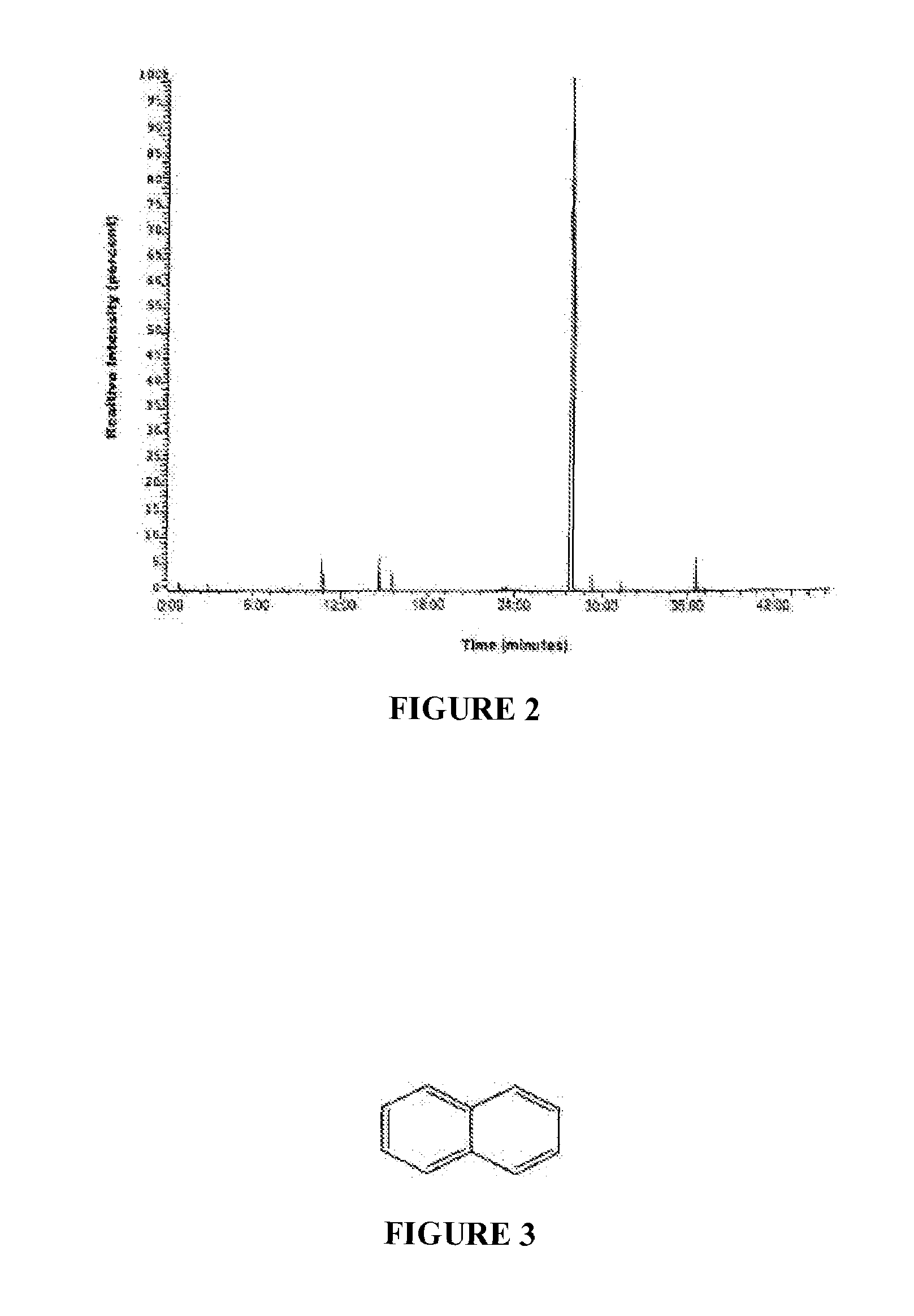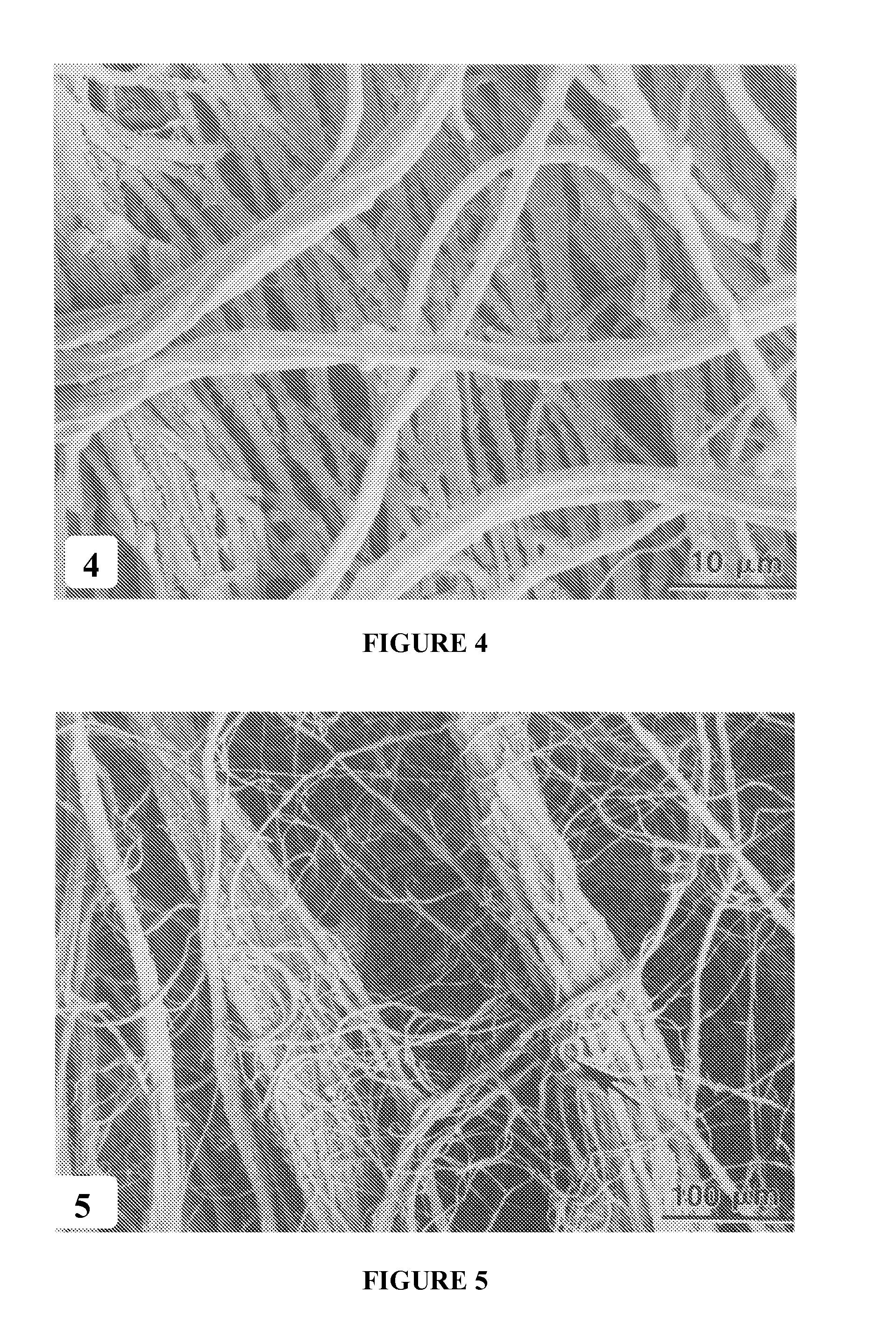Methods and compositions relating to insect repellents from a novel endophytic fungus
a technology of endophytic fungus and insect repellent, which is applied in the field of new endophytic fungus, can solve the problems of difficult observation, complex endophytic associations, and inability to penetrate living cells,
- Summary
- Abstract
- Description
- Claims
- Application Information
AI Technical Summary
Problems solved by technology
Method used
Image
Examples
example 1
Fungal Isolation and Storage
[0041]The culture of M. vitigenus used in this study was isolated as an endophyte from a liana growing in the upper Amazon (Daisy et al., 2002). Several small limbs of P. paullinioides were removed from a plant growing near Lake Sandoval in the Bahuaja Sonene Park Nacional in the extreme south of Peru, 12° 36′ 27″ N, 69° 01′ 58″ W. Small pieces of the inner tissues of the plant were placed in specially prepared Petri plates that were part of a selection system designed to specifically isolate endophytes related to the Muscodor spp. and / or other fungi that produce volatile antibiotics (Strobel et al., 2001). This selection system has been described previously and includes the use of the known Muscodor spp. isolates as selection tools (Worapong et al.; 2002). M. vitigenus, a sterile, gas-producing fungus, has been classified as a member of the genus Muscodor primarily due to the relatedness between its 18S rDNA sequences to previously known members of this ...
example 2
Gas Volatile Analyses
[0042]The compounds produced as volatile secondary metabolites of a 21-day-old culture of M. vitigenus were initially identified by GC / MS. Comparable analyses (controls) were done on the gas phase trapped above an uninoculated PDAN Petri plate. Compounds appearing in the control plate were subtracted from the analyses of those trapped on the plate supporting fungal growth. Some of compounds in the control Petri plate were styrene, benzaldehyde, butylated hydroxytoluene, toluene, and a number of minor benzene derivatives including benzene, 1,3,5 trimethyl and benzene, 1-methoxy-3-methyl. Initial identification of the volatile compounds in both analyses was based on a comparison of the mass spectral data acquired after separation on by GC / MS with the NIST database. The most abundant compound appearing in the M. vitigenus culture atmosphere, based on the total integrated peak area of the GC elution profile, was naphthalene with a retention time of 28:03 min. (FIGS....
example 3
Rate of Naphthalene Release
[0043]Six plugs of PDAN (0.785 cm2) supporting growth of 14 day-old M. vitigenus cultures were placed in a specialized volatile collection chamber, described previously, to find the rate of naphthalene released from each of them. Volatiles were collected for 3 hours and were then analyzed by GC / MS. Naphthalene identification was again confirmed as compared to an authentic standard and quantified using decane as an internal standard. The rate of naphthalene production, on six agar plugs, ranged from 9.45 ng hr−1 to 106.85 hr−1 with the mean production rate at 25.7±11.8.−1 Although the range of naphthalene production is large, even the smallest yield of naphthalene proved to be great enough to modify insect behavior. Furthermore, on PDAN, naphthalene production began to occur at 7 days and continued for several weeks.
PUM
 Login to View More
Login to View More Abstract
Description
Claims
Application Information
 Login to View More
Login to View More - R&D
- Intellectual Property
- Life Sciences
- Materials
- Tech Scout
- Unparalleled Data Quality
- Higher Quality Content
- 60% Fewer Hallucinations
Browse by: Latest US Patents, China's latest patents, Technical Efficacy Thesaurus, Application Domain, Technology Topic, Popular Technical Reports.
© 2025 PatSnap. All rights reserved.Legal|Privacy policy|Modern Slavery Act Transparency Statement|Sitemap|About US| Contact US: help@patsnap.com



